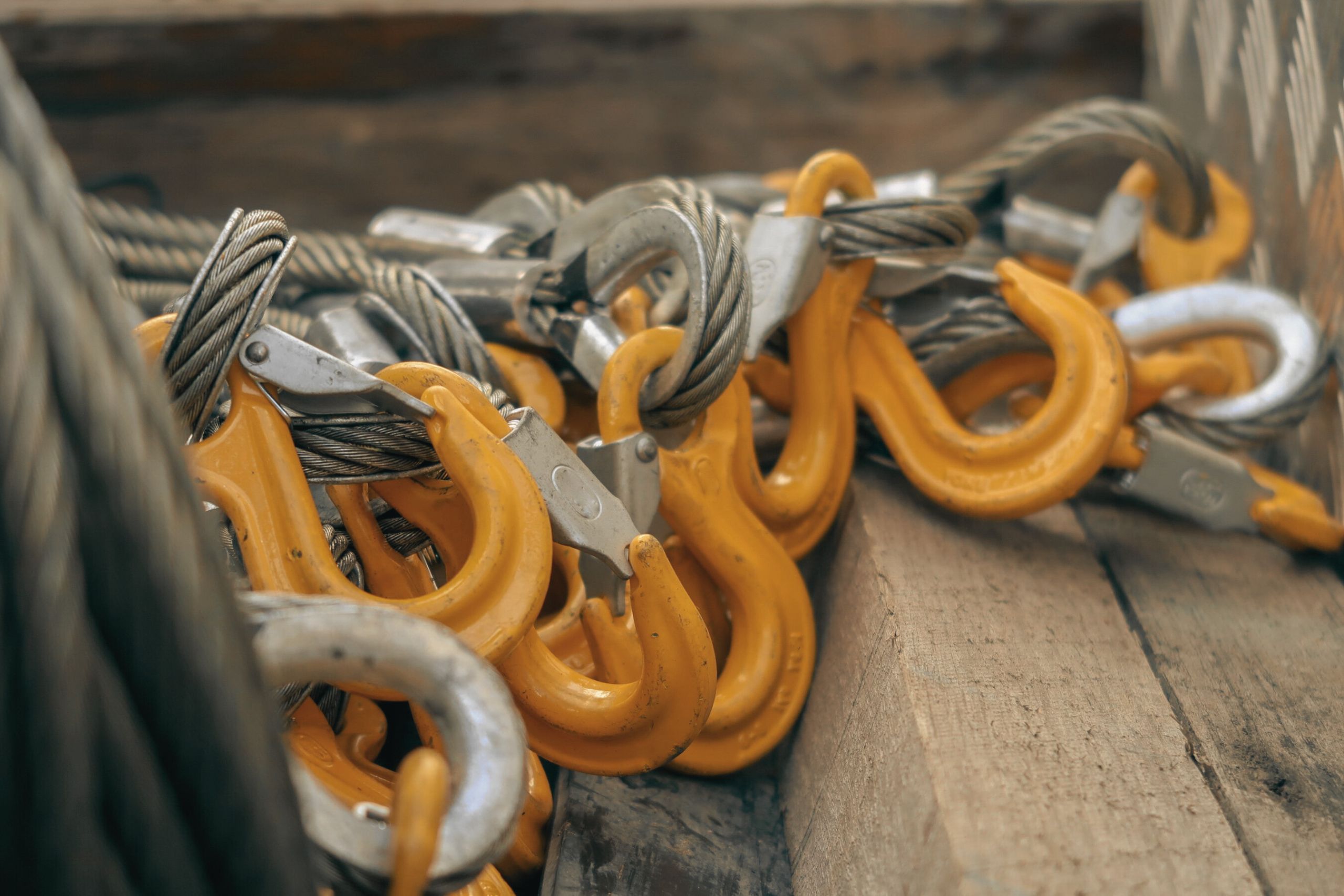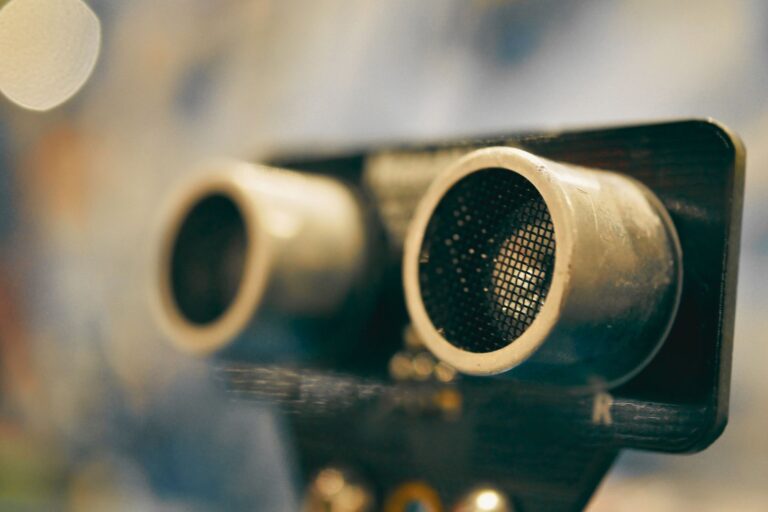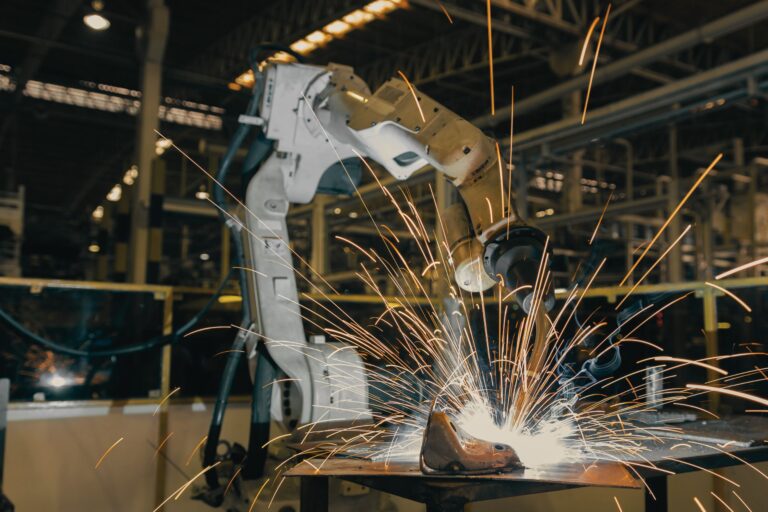Choosing steel wire rope, chain and hooks: How to extend the life of lifting equipment
The right choice of wire rope, chain and hooks determines not only the safety but also the total cost of ownership of the lifting system. The combination of appropriate design/grade, correct integration to drums and pulleys, regular inspection and lubrication can extend the service life many times over and reduce unplanned downtime.
What has the greatest impact on wear and tear?
- Load spectrum and cyclicity – heavy loads, frequent starts/stops and high speeds accelerate material fatigue.
- System geometry – pulley/drum diameter to rope diameter (D/d), channel profile, alignment and winding angle.
- Wednesday – corrosion (moisture/chemicals), dust/abrasives, extreme temperatures.
- Lubrication and cleaning – the quality and frequency of lubrication directly affect wear and corrosion resistance.
- Operating practices – smooth acceleration/braking profiles, avoiding “shock” lifts and overloads.
Steel wire rope: selection criteria
- Construction and core – choose a rope according to the application (e.g. high flexibility for multi-layer winding or greater wear resistance for heavy duty). Steel wire rope core (IWRC) increases resistance and minimizes deformation under load.
- Torque and torsional resistance – for single “falls” and high altitudes, consider anti-rotation structures.
- Coverage and protection – galvanizing/special coatings and factory impregnation limit corrosion; important when working outdoors.
- Pulley/drum compatibility – the profile and stiffness of the channels, as well as the D/d recommended by the rope/hoist manufacturer, are critical for life and safety.
- End caps – pressed terminals/sockets provide repeatability; wedge terminals are convenient for installation, but require strict adherence to instructions.
Inspections and maintenance: periodic visual inspections for broken wires, flattening, local corrosion, change in diameter; timely intermediate lubrication with a suitable product; keeping a log of cycles/hours of operation. The criteria for scrapping should be in accordance with applicable standards and the manufacturer's recommendations.
Chain hoists: chain and component selection
- Chain class – use certified chains (e.g. of a higher strength class for more compact hoists) compatible with the hoist and wheels.
- Compatibility of elements – hooks, brackets and suspensions must be of the same class and have a clearly marked payload (WLL).
- Work environment – for high temperatures/chemistry, select an appropriate material/coating according to the manufacturer's instructions.
Inspections: Check for joint elongation, cracks, corrosion and deformation; Measure and compare with nominal dimensions; Lubricate according to specifications.
Hooks and hanging elements: details matter
- Type and lock – single/double hooks, swivel bases, automatic tongue locking devices; choose according to the type of load and the need to prevent self-release.
- Deviations and deformations – monitor “hook throat opening”, saddle wear and twisting; any significant change is a signal for removal from service.
- Traceability – WLL, batch, supplier certificates markings.
System integration: drums, pulleys, reeving and control
- Reeving and winding – correct rope routing schemes; compliance with minimum deflection angles and hook heights; uniform arrangement on the drum.
- Diameter compatibility – compare the pulley/drum diameter with the recommendations for the selected rope/chain; check the channel profile.
- Traffic management – smooth profiles (S-curve), limiters, soft stops and anti-swing algorithms reduce shock loads and extend the life of the rope/chain/hooks.
Maintenance and inspections: the routine that saves money
- Daily/periodic checks – visual inspection before shift; periodic detailed inspections according to schedule; recording of deviations.
- Lubrication and cleaning – lubricate as recommended; remove dust/abrasives that accelerate wear.
- Storage and logistics – drums and chains should be stored dry, covered, without sharp bends/impacts.
- Scrapping criteria – follow the manufacturer's standards and documentation (for broken wires, corrosion, local deformations, elongation, etc.).
- Staff training – operators and maintenance with clear checklists: signs of wear, load limits, incident procedures.
KPIs and actionable metrics
- Life to scrap (hours/cycles) by rope/chain type and application;
- Unplanned stay and reasons; MTBF/MTTR;
- Energy consumption and “shock” events (log of inverters/controller);
- Winding quality (evenness, drum steps) and frequency of corrections.
The Bulgarian context: what to expect
- Availability of standard rope/chain designs and delivery times for non-standard products.
- Outdoor work, dust and corrosive environments – lubricants/coatings and inspection interval.
- Documentation and traceability – test reports, supplier certificates, maintenance records.
How we approach
At Bullitt Engineering we take a step-by-step approach – assessing the current mechanics and operating conditions, selecting the right rope/chain/hook for the environment and geometry, and planning for inspections/lubrication. Where appropriate, we consider adjustments to the winding and travel profiles to limit shock loads and extend the life of the lifting equipment.
If the topic is relevant to your site, we can discuss specific requirements and possible options for a pilot phase – with an emphasis on safety, repeatability, and realistic implementation timelines.







